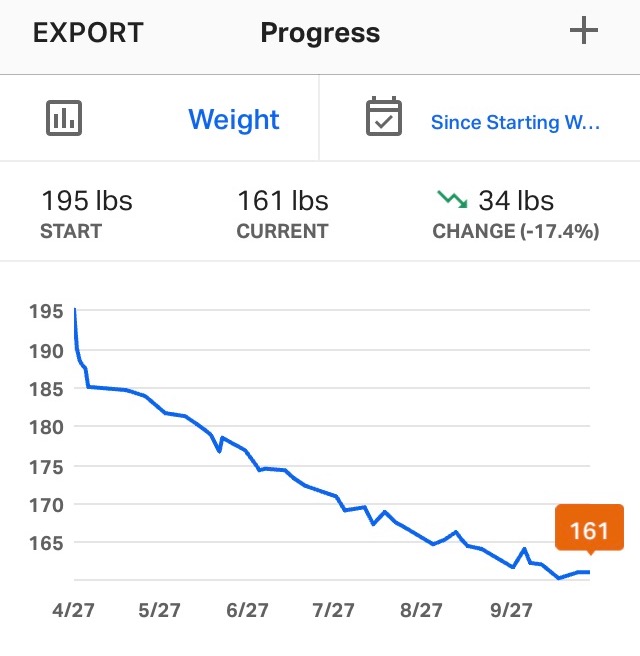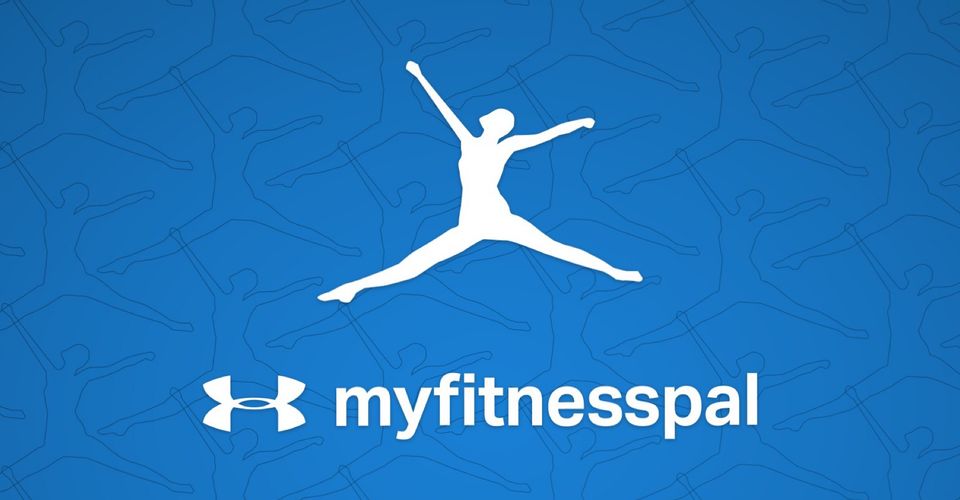I never thought I’d be writing a MyFitnessPal app review because I have never been a fan of daily food tracking. It seems so unnatural and time-consuming. I also felt that food logging could become obsessive for some people. However, I’ve completely changed my mind since I tried it and loved it. I also consider myself a “non-smartphone” person, using my phone only for a few calls and text messages.
Go For the Premium Plan
First, I paid for the premium plan rather than the free version so I would have access to certain features. I started tracking mainly to monitor my macronutrient intake since I was beginning a liver support eating program. I needed to know how much fat I was consuming (the liver prefers a diet lower in fat). So I started by setting up my macronutrient goals; 50% carbohydrates, 20% proteins, and 30% fats. Next, I figured I’d set up a weight loss goal. The app offered this and I had body fat to lose, which had become more difficult after menopause. I also wanted to have the ability to scan foods in case they were not in the database. I was certain I’d add recipes along the way. The Premium features in the MyFitnessPal app are definitely worth it for $9.99 a month.
The MyFitnessPal App Makes Tracking Easy
I was amazed at how easy it was to track what I ate each day. Initially, I thought this was going to be time-consuming and difficult. However, I discovered it was incredibly quick and easy, mainly because of the extensive food database. The database includes many foods by default in addition to those added by users. It included just about everything I eat and the brands I typically select. In fact, during the past 6 months of tracking, I only had to scan a food item once. I was also happy to see Whole Foods Market’s hot food bar items in the database (artichoke and cheese frittata). All I had to do was weigh it which they do anyway at the checkout.
The app remembers what foods you eat most frequently. After a week of tracking it only took me a couple of minutes (or less) to enter a meal or snack. I love the recipe feature. I added my daily coffee as a recipe, calling it “Sue’s Coffee” (cold-brewed coffee, raw honey, and organic half and half). I also added my usual Tuesday salad as a recipe. I take this salad to work and edit the recipe each week based on what ingredients I used that day. It’s so easy!
Add Your Favorite Recipes
I added the recipes I make from scratch using high-quality ingredients and eat frequently. This includes my Sloppy Joes, Gluten-free Lasagna, soups, salad dressings, Turkey Meatballs, Sweet Potato Salad, and my homemade Fire-roasted Chili. What’s really cool about adding recipes is you can edit them each time you make them. I do this each week when I make potato salad. For one recipe, I weigh the potatoes after I peel them, then edit the recipe (so it’s more accurate). Then, it’s easy to save the recipe and log it into your daily diary. Having all the macronutrient information makes it simple to adjust recipes to make them even healthier.
Track Your Exercise in the MyFitnessPal App
I do a run-walk workout three times a week on the beach. I simply enter my total running minutes and then my walking minutes. I also walk my dog daily but at a different pace. That’s a different walking entry. I have the “add exercise calories” feature turned on. This reminds me to eat more total calories on days I exercise. One day I was below my calorie goal and received a message that said, “Based on your total calories consumed for today, you are likely not eating enough.” I appreciated that reminder.
What I Learned From the MyFitessPal App
I was eating too much fat.
The app made me aware of how much fat I was eating every day. I set my goal at 30% of my total calories from fat. The first week I was over 50% almost daily, just eating what I normally eat. I reduced my intake of fat and still have a difficult time keeping it below 35% (important for liver health). I also reduced my intake of nuts and cheese, two fat sources that always put me over my fat intake goal.
My carbohydrate intake is always within a healthy range.
I am definitely not carbohydrate-phobic. I set my goal for daily carbohydrates at 50% hoping to range between 45 and 55 percent. It was difficult to keep this above 45%. I know that healthy carbohydrates, including whole grains and some starches, provide excellent energy for exercise and feed my beneficial gut bacteria. The key here is the amount and the type. I regularly ate fruit and veggies liberally as snacks and steered away from nuts, which are easy to overeat. I also ate potato salad, gluten-free bread in moderation, and pasta which are all big no-nos in today’s diet world. I enjoyed a gluten-free pizza every week (part of our “Pizza Friday” family tradition) but consumed only what fit into my calorie goal (2 slices).
I can eat what I want as long as I watch portions.
I actually did some measuring of foods, mainly to gain awareness and I did accomplish that goal. After measuring for a while, you realize how easy it is to overeat, especially when it comes to tasty foods. Since I was on a liver health program, I eliminated alcohol 100%, all fried foods (including healthy nuts and tortilla chips), and drank green vegetable juice once daily. I was happy to see Trader Joe’s Cold-pressed Green Juice in the database.
Seeing the macronutrients in the MyFitnessPal App helped me plan dinner.
After lunch each day, I looked at my macronutrients and that helped me choose what to eat for dinner. For example, if my fat intake was high, then I’d plan a low-fat dinner with plenty of vegetables. Or if my protein intake was too low after lunch, I chose a dinner selection with sufficient protein. This was like a fun game for me!
My Results Were Great
I set my weight loss goal at one pound per week. After the first month, I lost 14 pounds, which probably included excess water weight. Then, after the second month, another 7 pounds came off. After the third month, 5 more pounds came off. After month four, I dropped another 8 pounds for a total of 34 pounds!
My bioimpedance scale showed that what I was losing was body fat, not muscle, not water. The weight loss was slow and consistent, but as long as it was going down, I didn’t mind and remained patient. I weighed myself only once per week on the same day of the week under the same conditions. Seeing the progress graph kept me motivated.

I am a nutritionist with an undergraduate degree in exercise science and a Master’s degree in human nutrition. I’ve tried many diets and eating approaches, mainly to see how they feel and evaluate whether or not they’re doable and healthy. I found that this handy app makes watching what you eat and monitoring portions very realistic As a bonus, the MyFitnessPal blog is excellent with science-based information and easy-to-read articles (I’m also a health writer).
The MyFitnessPal app is my new best friend. I have just a few more pounds to go before achieving my ultimate, healthy weight goal. More importantly, this app first helped optimize my liver with fat loss as a secondary goal (which also helped my liver). What I loved most about this approach: no gimmicks, real eating, and just healthy awareness. In my case, the MyFitnessPal app really opened my eyes. Check it out here.

LEAVE A COMMENT
Comments